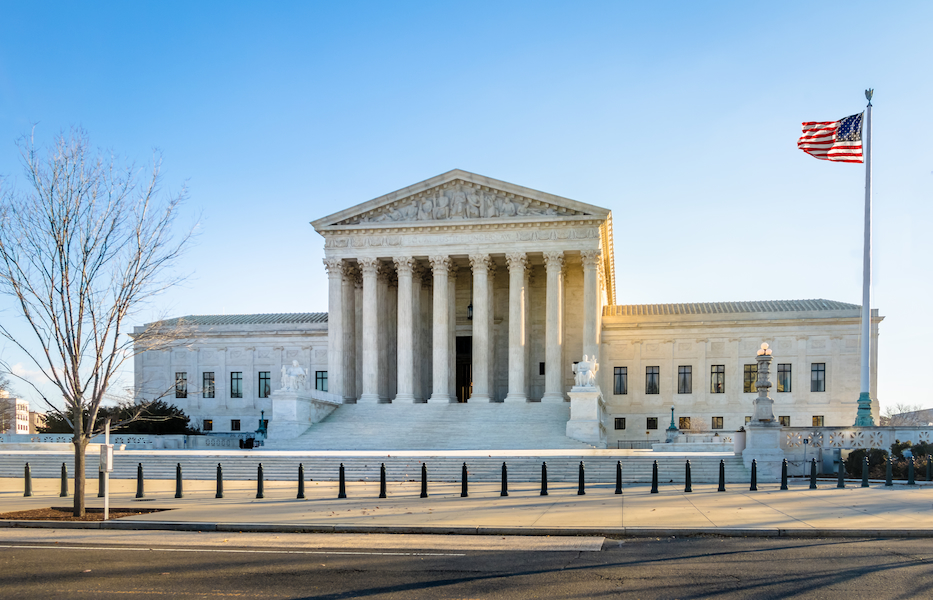United States v. Texas Addresses Presidential Use of Executive Orders

In January, the U.S. Supreme Court added another potential blockbuster case to the current Term. In United States v. Texas, the justices will consider whether President Obama’s use of executive action to further his immigration policy violated the Take Care Clause of the U.S. Constitution.
The Facts of United States v. Texas
In 2014, the Department of Homeland Security (DHS) issued new guidance regarding a practice known as “deferred action,” under which the Secretary has the discretion to forbear, “for humanitarian reasons or simply for [his] own convenience,” from removing particular aliens from the United States. The DHS Director ordered his subordinates to establish a process for considering deferred action for certain aliens who have lived in the United States for five years and either came here as children or already have children who are U.S. citizens or permanent residents. The new policy, known as DAPA (Deferred Action for Parents of Americans), was challenged by 26 states.
Several days before the new guidance was scheduled to take effect, U.S. District Judge Andrew Hanen issued a temporary injunction, holding that the Obama Administration failed to comply with the Administrative Procedure Act (APA). The U.S. Court of Appeals for the Fifth Circuit upheld the order, and the federal government appealed to the U.S. Supreme Court.
The Legal Background of United States v. Texas
The Take Care Clause of the Constitution, Art. II, Sec. 3., states that the President “shall take Care that the Laws be faithfully executed.” The clause has been interpreted to mean that the primary responsibility of the President is to faithfully execute the laws passed by Congress.
Vey few Supreme Court cases have interpreted the Take Care Clause. Most notably, the U.S. Supreme Court partly relied on the Take Care Clause in its 1952 decision in Youngstown Sheet & Tube Co. v. Sawyer. The landmark case held that President Harry S. Truman’s use of executive action to seize the country’s steel mills was unconstitutional. “The President’s power to see that the laws are faithfully executed refutes the idea that he is to be a lawmaker,” Justice Hugo L. Black wrote. In Justice Black’s view, the President’s authority must stem either from an act of Congress or from the Constitution itself. Justice Robert Jackson’s concurrence adopted a more flexible framework that is more frequently used in executive power cases.
The Issues Before the Court Regarding United States v. Texas
The Supreme Court agreed to consider the following two questions raised by the federal government: Whether a State that voluntarily provides a subsidy to all aliens with deferred action has Article III standing and a justiciable cause of action under the APA to challenge the Guidance because it will lead to more aliens having deferred action; whether the Guidance is arbitrary and capricious or otherwise not in accordance with law; and whether the Guidance was subject to the APA’s notice-and-comment procedures.
In its order granting certiorari, the Court also directed the parties to consider the larger Constitutional issue: “whether the guidance violates the Take Care Clause of the Constitution, Article II, section 3.” Accordingly, the Court’s decision could significantly alter the ability of future Presidents to rely on executive action.
Previous Articles
SCOTUS Wraps Up Oral Arguments for the Term
by DONALD SCARINCI on May 17, 2022
The U.S. Supreme Court has concluded its oral arguments for the October 2021 Term. The justices hea...
SCOTUS Rules Censure of Elected Board Member Didn’t Violate First Amendment
by DONALD SCARINCI on May 10, 2022
In Houston Community College System v. Wilson, 595 U.S. ____ (2022), the U.S. Supreme Court held th...
Supreme Court Breach Is Not the First Involving Roe v. Wade
by DONALD SCARINCI on
The recent disclosure of Justice Samuel Alito’s decision purporting to overturn Roe v. Wade is ar...
The Amendments
-
Amendment1
- Establishment ClauseFree Exercise Clause
- Freedom of Speech
- Freedoms of Press
- Freedom of Assembly, and Petitition
-
Amendment2
- The Right to Bear Arms
-
Amendment4
- Unreasonable Searches and Seizures
-
Amendment5
- Due Process
- Eminent Domain
- Rights of Criminal Defendants
Preamble to the Bill of Rights
Congress of the United States begun and held at the City of New-York, on Wednesday the fourth of March, one thousand seven hundred and eighty nine.
THE Conventions of a number of the States, having at the time of their adopting the Constitution, expressed a desire, in order to prevent misconstruction or abuse of its powers, that further declaratory and restrictive clauses should be added: And as extending the ground of public confidence in the Government, will best ensure the beneficent ends of its institution.




